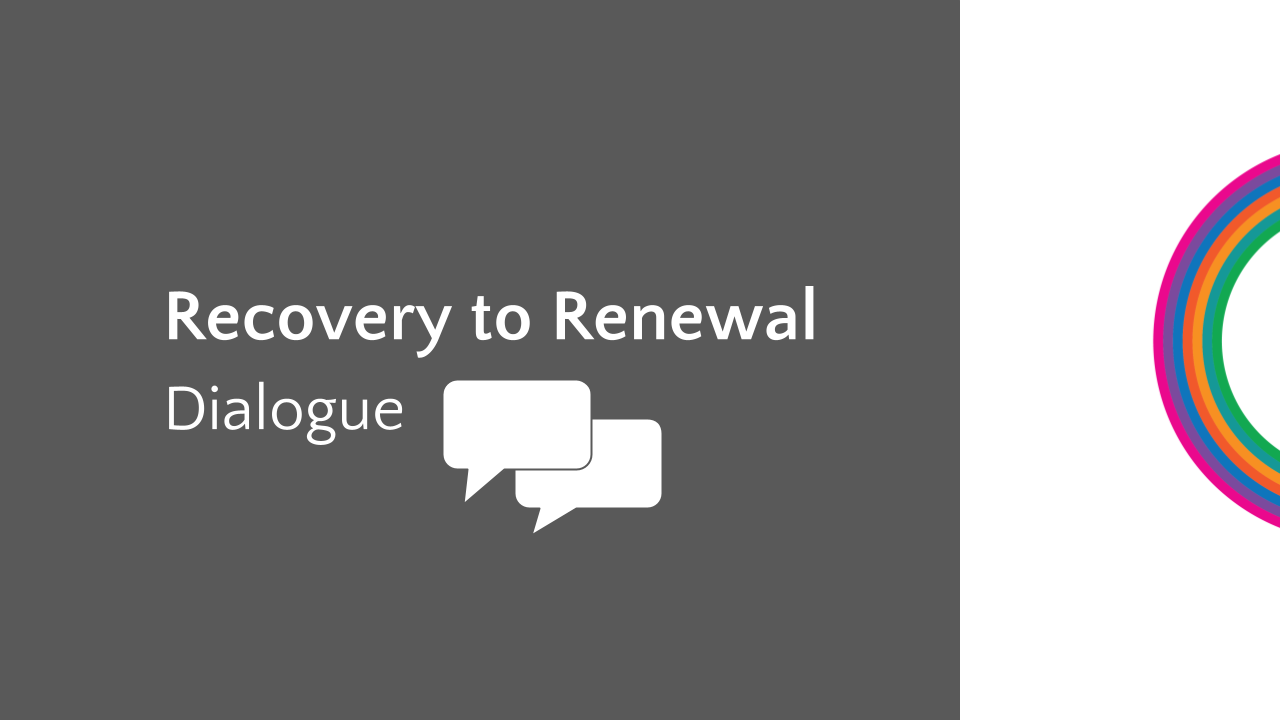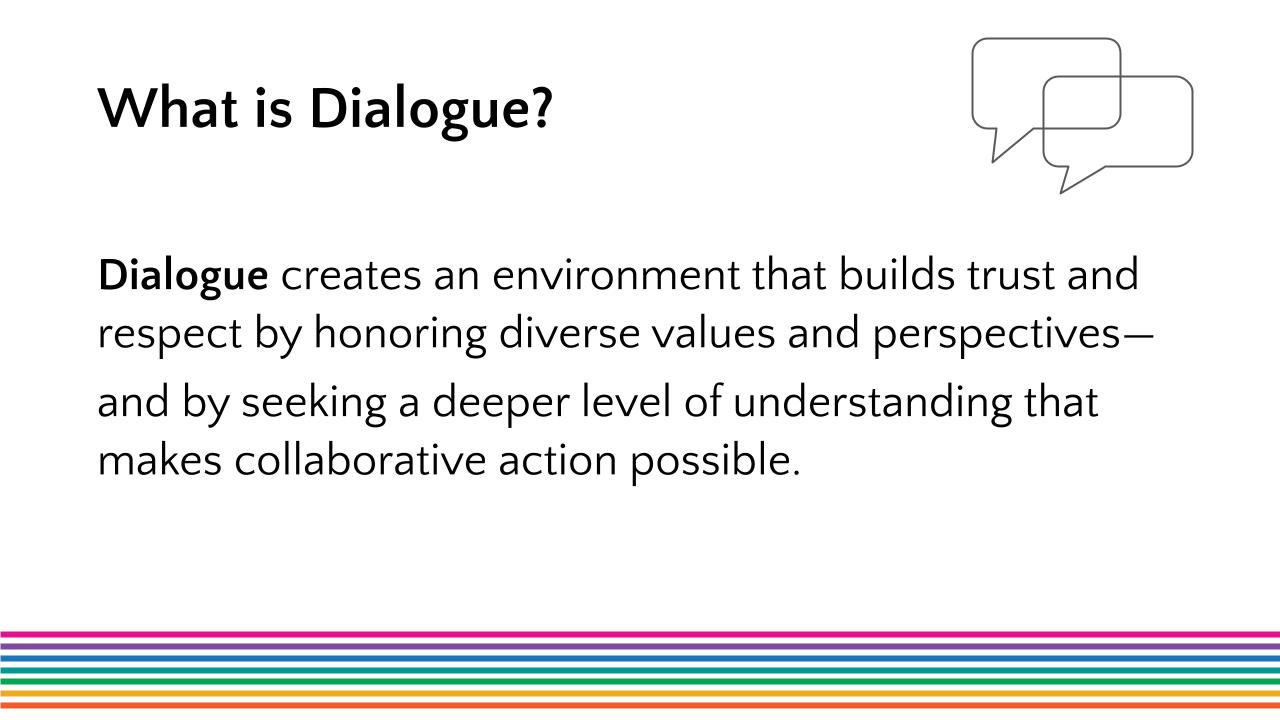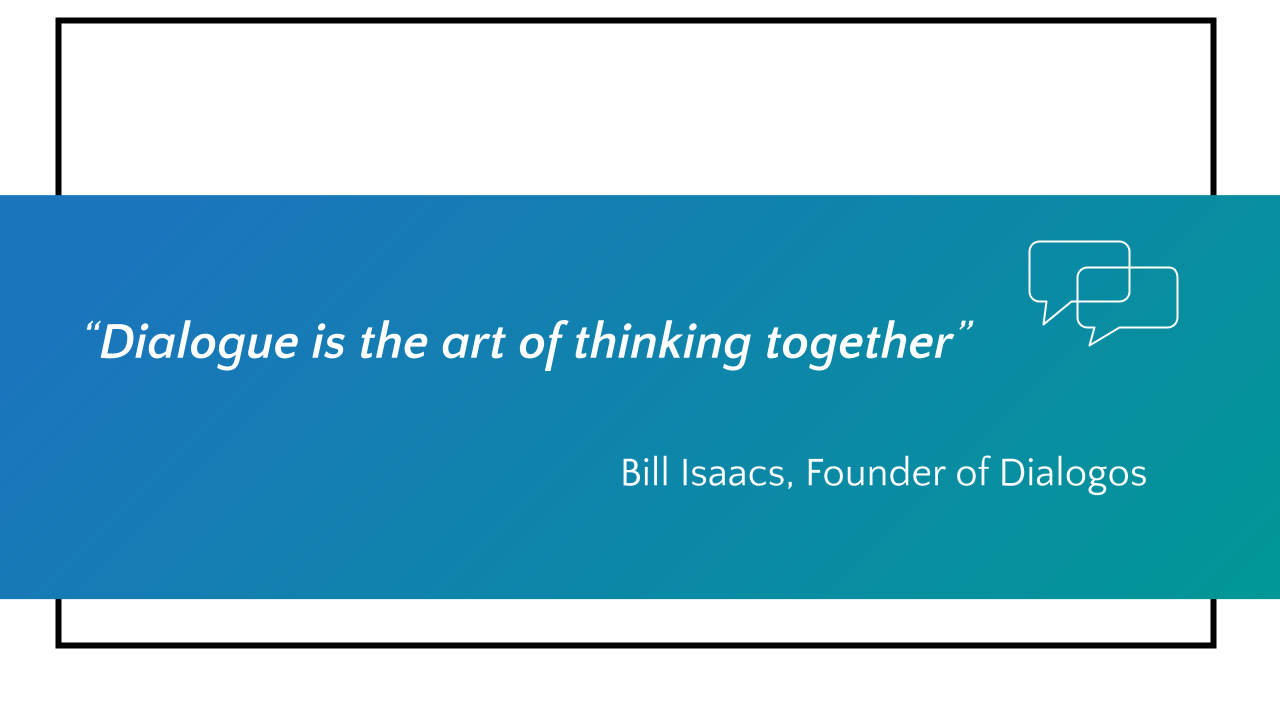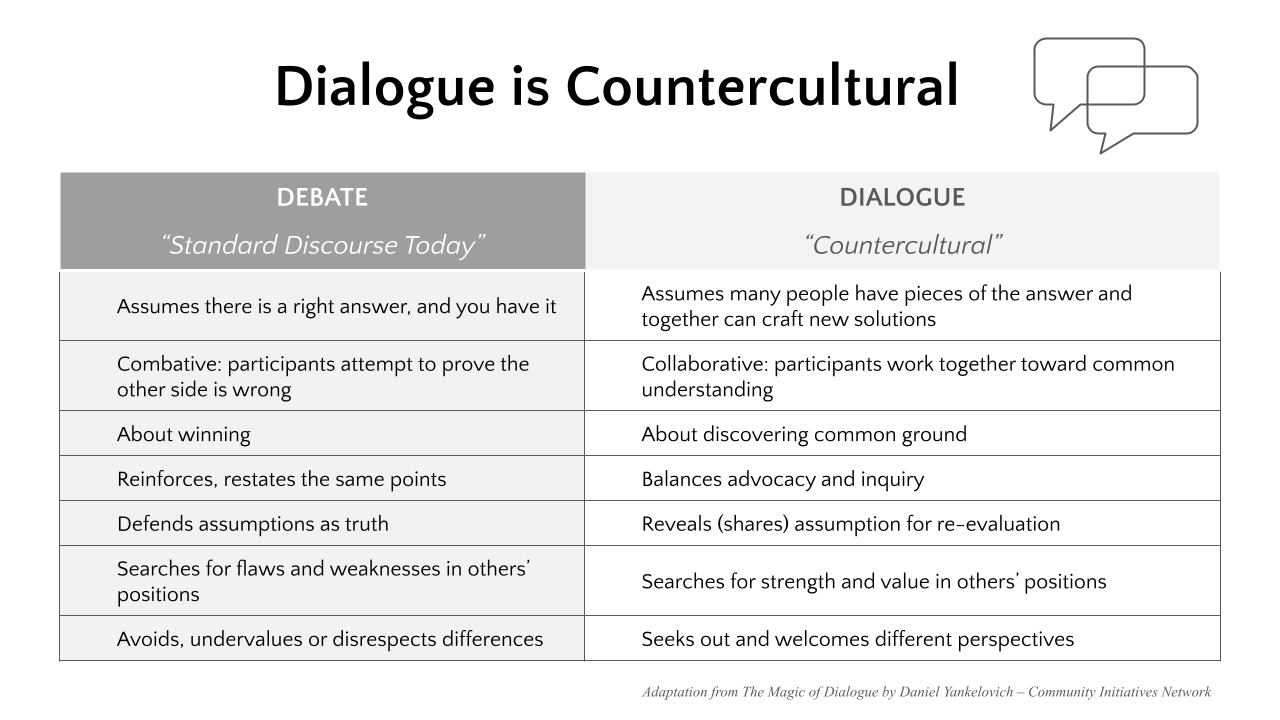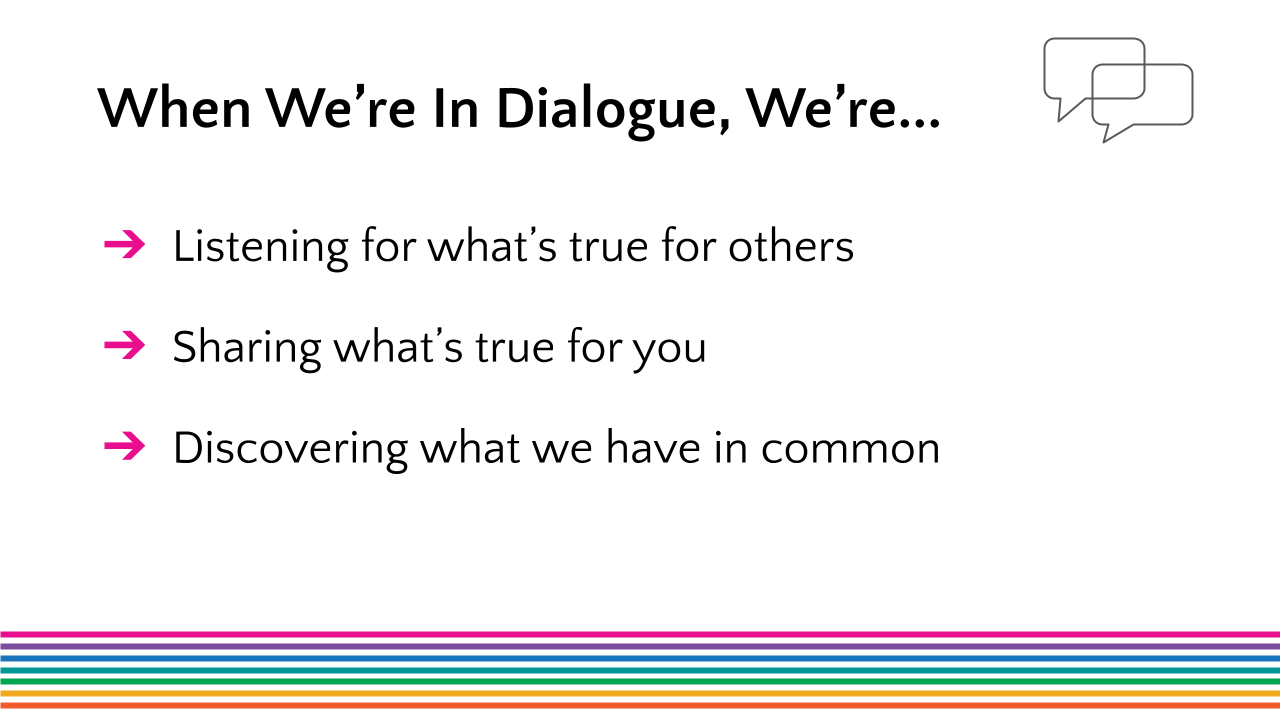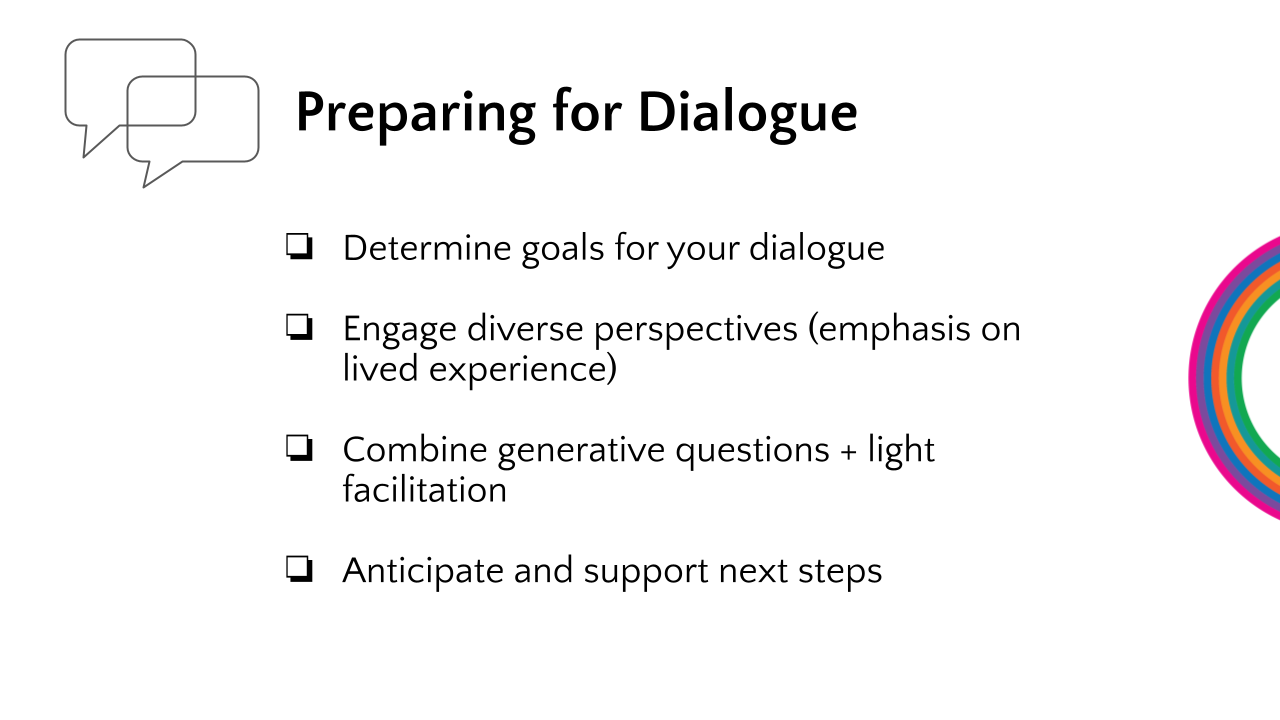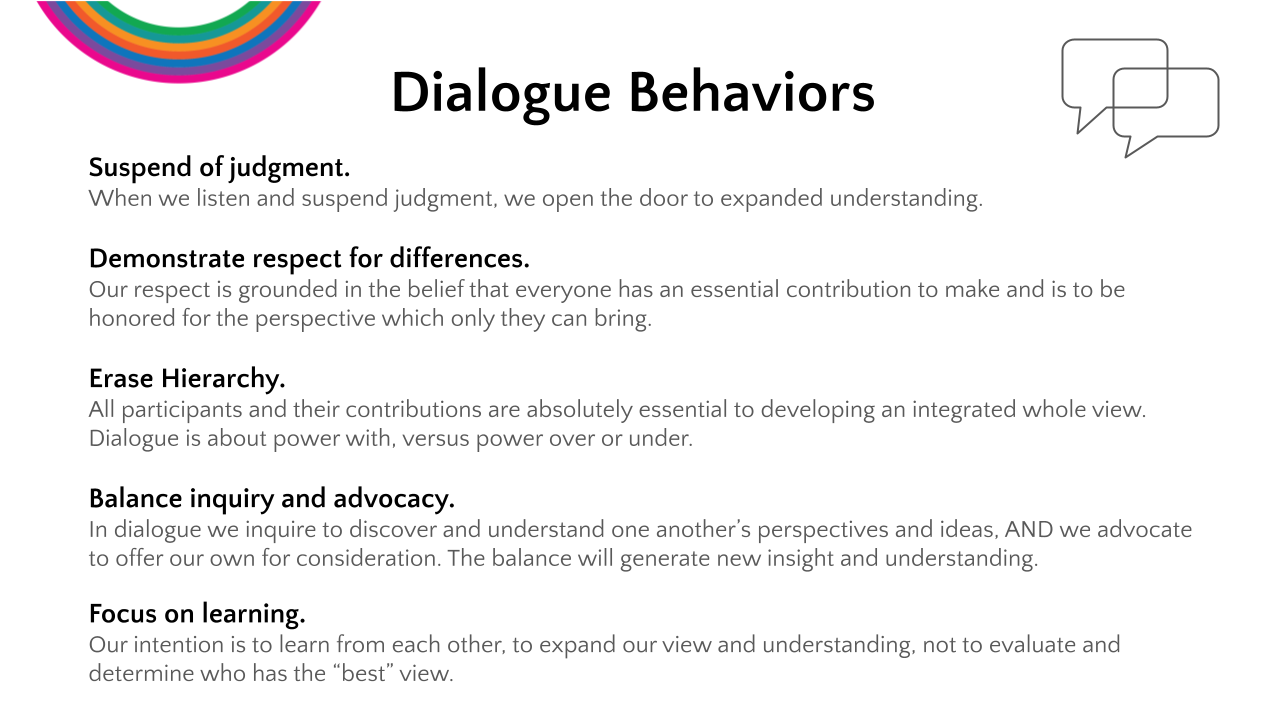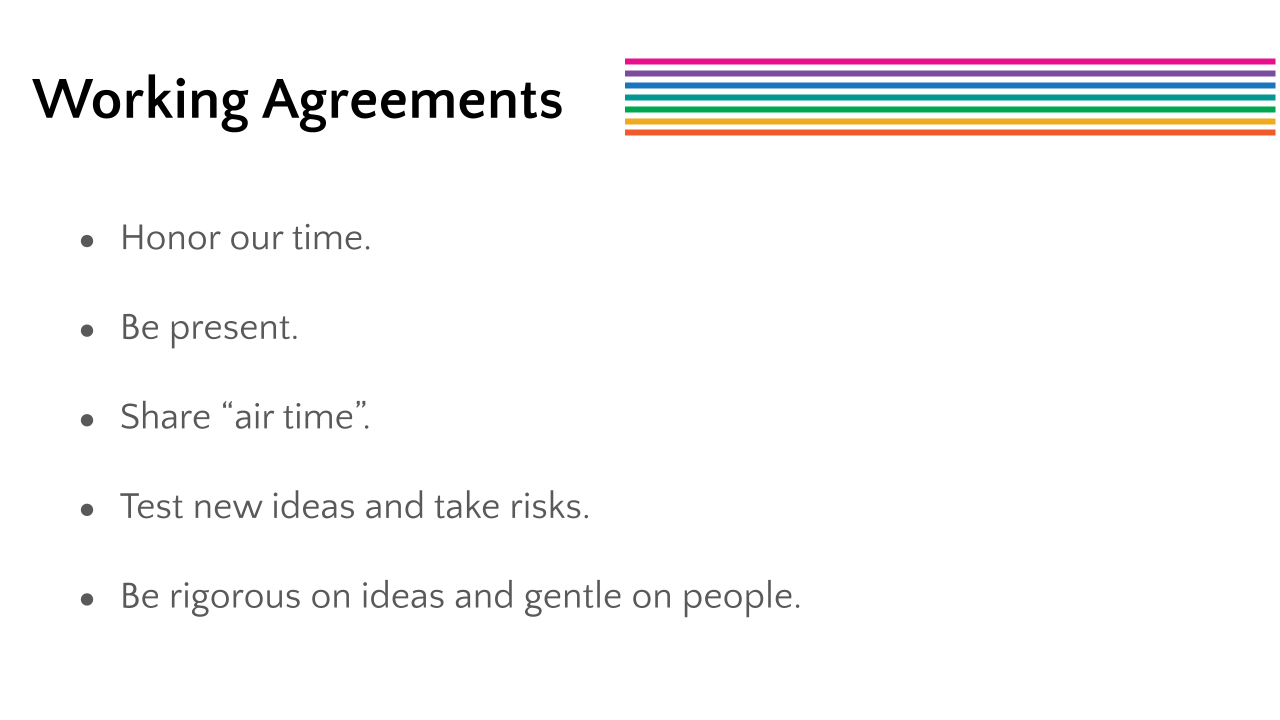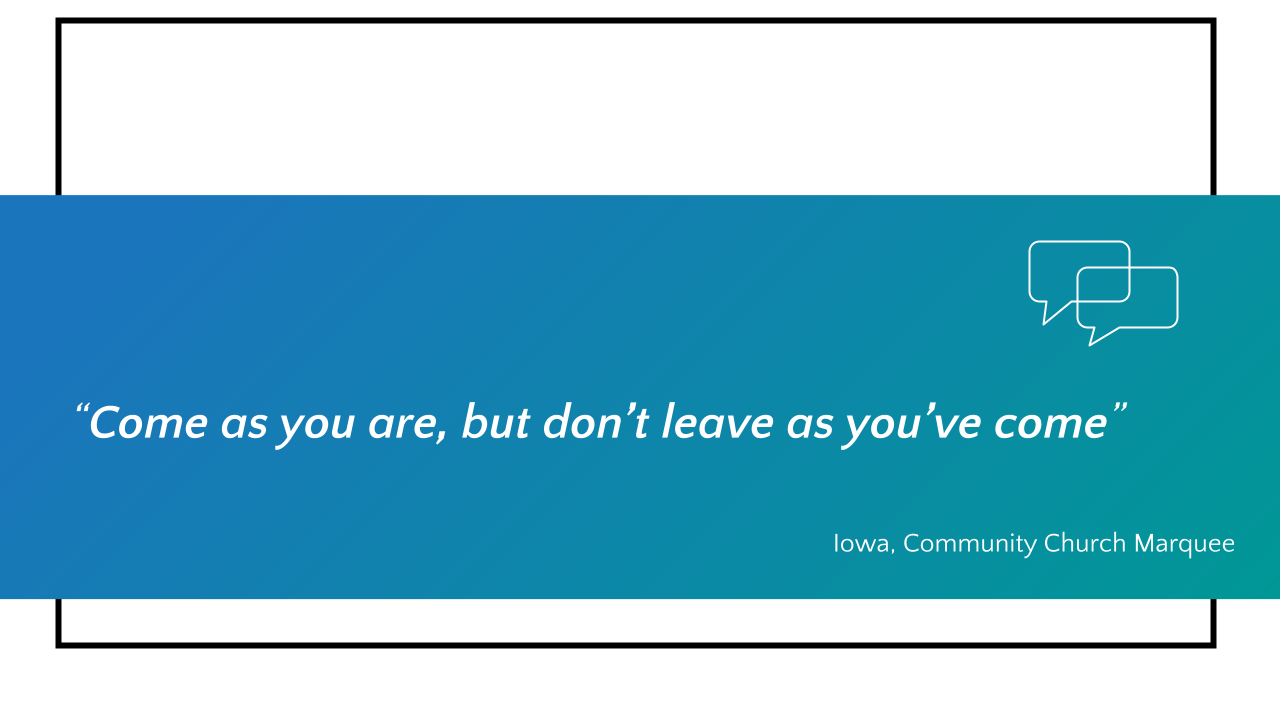Communities are working right now to respond to urgent needs and crises–and explore how investments in vital conditions can strengthen our systems and help us prepare for the next disaster.
While all communities have strengths, assets, and expertise in the people and places they call home, it can be hard to know where to start. Explore the tools and resources below to help jump-start your pathway toward renewal.
Engaging through Dialogue
Community engagement processes are critical to ensuring residents and community partners are able to share their ideas and solutions. Authentic dialogue is a simple and powerful place to start.

Why is dialogue important for meeting this historic moment?
- Dialogue is the art of thinking together. It is different from focus groups, surveys or other community input formats because it generates deeper understanding and new possibilities.
- Dialogue strengthens our relationships and sense of belonging. When we listen and discover by sharing stories, we are able to create connections and generate empathy–and build trust relationships across the lines that too often divide us.
- Dialogue helps build our civic muscle, making it easier to take action together. Through deeper understanding, better ideas and trust relationships, dialogue builds the collective power for collective action (and adaption) to meet the needs of all community members.
- Dialogue balances creative tensions. Dialogue successfully balances tensions inherent in moving from rescue to renewal: short-term needs and long-term interests; moving quickly and being playful; engaging traditional partners and underheard voices.
Explore our Recovery to Renewal dialogue guide–and learn more about dialogue on the Community Commons.
Expanding Belonging & Civic Muscle
Unprecedented financial investments offer an opportunity to expand Belonging and Civic Muscle–a vital condition that includes our sense of connection, opportunities to contribute and the capacity to act together for the common good. Deciding on and enacting rescue-to-renewal priorities offers extraordinary opportunities to exercise and expand this vital condition.
What is Belonging & Civic Muscle?
People need fulfilling relationships and social support to thrive. Social support from friends, family, and other networks helps us navigate challenges and reinforces healthy behaviors. People who feel connected–a sense of belonging–tend to live healthier, happier lives. And when people feel valued and cared for within the community, they are more likely to contribute to their community–from voting in an election, organizing a neighborhood arts festival, standing up for a just cause, or doing everyday work with pride in its public impacts and civic significance.
The ideas of belonging and civic muscle bring together a long history of related concepts, such as, civic agency, civic capacity, deliberative democracy, public participation, public work, constructive nonviolence, and collaborative problem solving.
All of these traditions strive to make democracy come alive, not only on election day but every day, as a way of life where we work across our differences in pursuit of the things we value.
Explore more about Belonging & Civic Muscle:
- Community Commons Collection: Belonging & Civic Muscle
- Cultivating Civic Muscle to Advance Equity
- Civic Capacity Index
Measuring What Matters
Communities, researchers and policy makers are increasingly redefining progress through the lens of well-being: a more holistic view that goes well-beyond traditional economic and health measures. A well-being lens and corresponding measures will prove to be especially helpful in moving from recovery to renewal.
Well-being encompasses our physical, mental, emotional, social, financial and spiritual health. It can best be understood in two, related ways. Well-being is both personal—changing over time as we live our lives—and dependent on community systems:
- Personal Experiences: Individual perspectives and experiences that affect how we think, feel, and function, as well as how we evaluate our lives as a whole.
- Vital Conditions: Properties of places and institutions that we all need to reach our potential.
One of our best measures of well-being asks people to rate their self-perceived well being on a scale from 0 (worst possible life) to 10 (best possible life), both now and in the future. When combined, those ratings reveal who feels they are thriving, struggling, or suffering.
How do we measure what matters?
To support meaningful measurement,communities and organizations need to develop an inclusive measurement process and data strategy. We recommend:
COMMON, COMMUNITY-DRIVEN MEASURES
Communities need to identify a small set of common measures to assess overall outcomes–and that can be easily tracked over time. Measures must relate to the context of their communities. This means that data has to be available at the community level (sub-county, ideally neighborhood).
BALANCED MEASURES
It is important to include subjective measures, like people-reported outcome measures to assess thriving, struggling and suffering (see well-being survey below), as well as objective measures, such as years of life lost or gained + the vital conditions (community well-being measures).
AN EQUITY LENS
For too long, aggregated data has obscured community realities as it relates to disparities across different racial and ethnic groups. Collecting and disaggregating data by race, ethnicity and other key demographic categories is essential to understand the impacts of our decisions on communities of color.
SHARED MEANING MAKING
In addition to selecting measures, it’s important to engage a broad set of community stakeholders in making meaning of data patterns and results. Community members are best positioned to generate stories and insights as to why different parts of the community might, for example, be suffering, struggling or thriving.
Explore more about measuring well-being:
- The Science of Thriving Together
- Well Being in the Nation (WIN) Measures
- Health and Well-Being Measurement Approach and Assessment Guide
Exploring Pivotal Moves
Investments in multisolving policies and practices will accelerate the expansion of the vital conditions we all need to thrive–and move us toward systems that meet the needs of everyone.
What are pivotal moves?
Pivotal moves are decisive actions that could begin now and change the course of community life relatively quickly. Pivotal moves are evidence-informed strategies that are implemented alongside the content and context expertise of community members.
Explore pivotal moves on our Building Block pages. Each page ends with recommendations from though leaders working with communities across the county:
